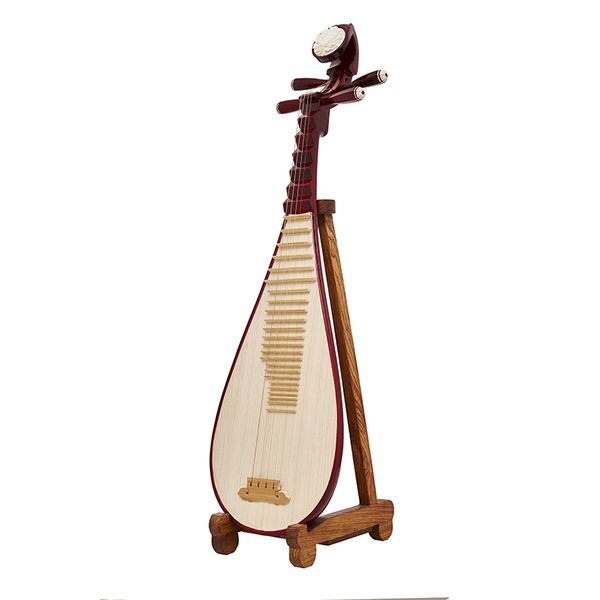Analysis of Pipa Wheel Finger Skills
Wheels: When the erhu and other stringed instruments play long notes, you can pull the "long bow" to get continuous long notes. When a flute and other wind instruments play a long note, they can blow a continuous long note in one breath. When playing long notes on stringed instruments such as the pipa, the fingerings such as "wheel" or "roll" and "shaking" are used to form a long note by using the fast single notes of the same phoneme. A long note played with a longbow and one breath is an uninterrupted long note, and a long note with a wheel or rock, in the middle of the long note, there are countless short intervals.

The determination of the wheel fingers: take the right finger as the first, the middle finger as the second, the ring finger as the third, and the little finger as the fourth, one by one in the forward direction (front left); Claim a round. This five-finger cycle of playing fingering is called ring finger. When turning the fingers, the time interval of the five fingers hitting the strings should be uniform, and the sound should be uniform.
There are two ways to play the wheel: one is called "lower out of the wheel", which is to use the small, name, middle, and index fingers of the right hand to pop out in sequence to the left, and then move the thumb to the right. Because it starts with the little finger to make the wheel first, it is called "the next wheel". In the Qing Dynasty, the Zhejiang School used this method. The advantage is that the pronunciation volume of each finger is easy to be similar; the disadvantage is that the volume is generally weaker. The other is called "upper wheel", which is to use the thumb or index finger of the right hand to start making the wheel. The Zhili School of the Qing Dynasty used this method. The advantage is that the pronunciation is generally stronger; the disadvantage is that the pronunciation of each finger tends to be different. Since most of them have adopted the method of "up-rounding", the main focus is to introduce the upper-rounding. Swipe, brush, sweep, and swipe are all fingerings in which four sounds (or three sounds) are pronounced at the same time. When playing chords or chords, this type of fingering is mostly used, and it is often used at the accent and climax of the music. Swipe, brush, sweep, swipe, sweep, sweep, sweep, sweep, including sweeping three strings, brushing three strings, rolling two strings, rolling three strings, rolling four strings, Lin, and hanging. They are all fingerings in which four (or three) sounds are pronounced at the same time. This type of fingering is mostly used when playing chords or chords. This kind of pronunciation is strong, easy to make intense and powerful performance, can highlight the stress and strengthen the rhythm, therefore, this kind of fingering is often used at the stress and climax of the music.
The wheel finger is the most basic, most commonly used and the most difficult to learn fingering in the pipa. There is usually a saying: once the wheel finger is learned, half of the pipa is learned.
 渝公网安备 50010702504639号
渝公网安备 50010702504639号